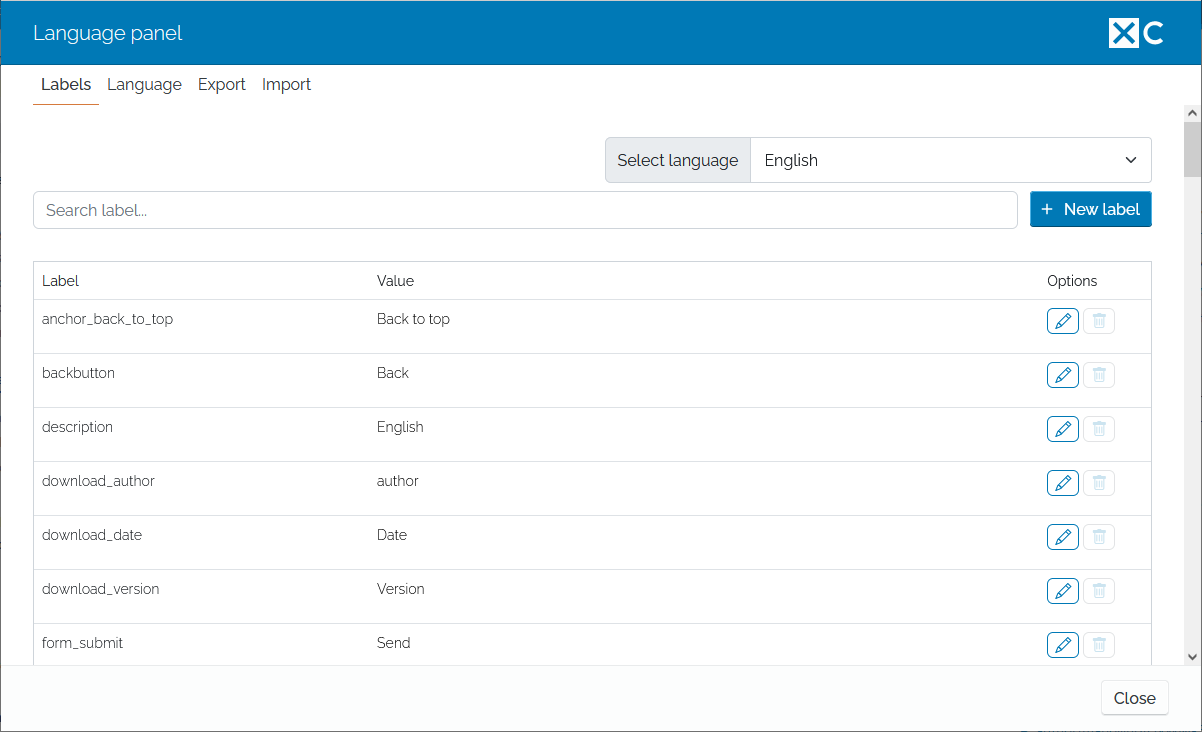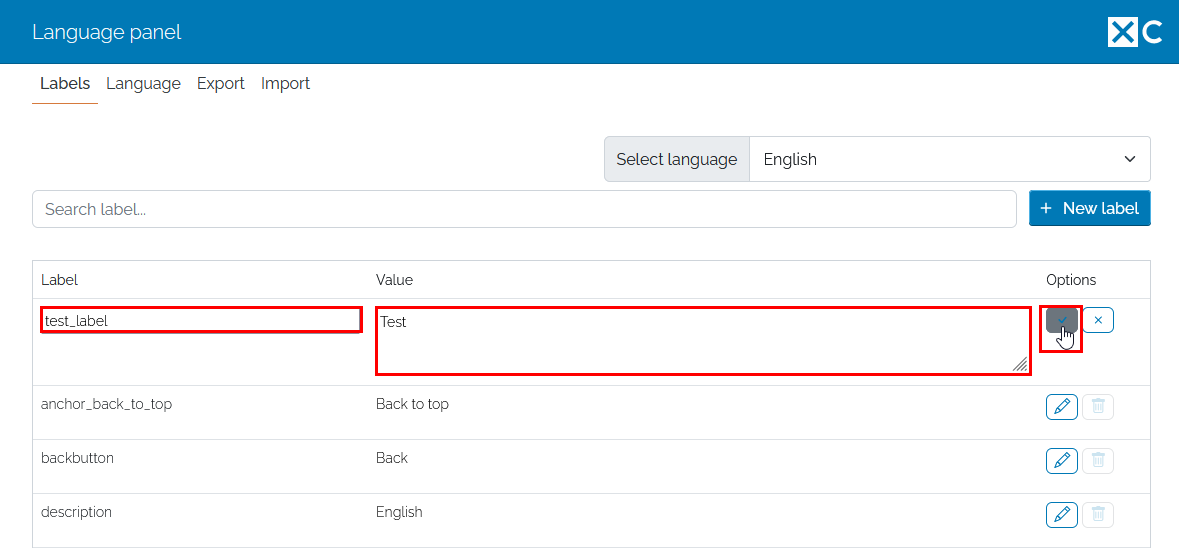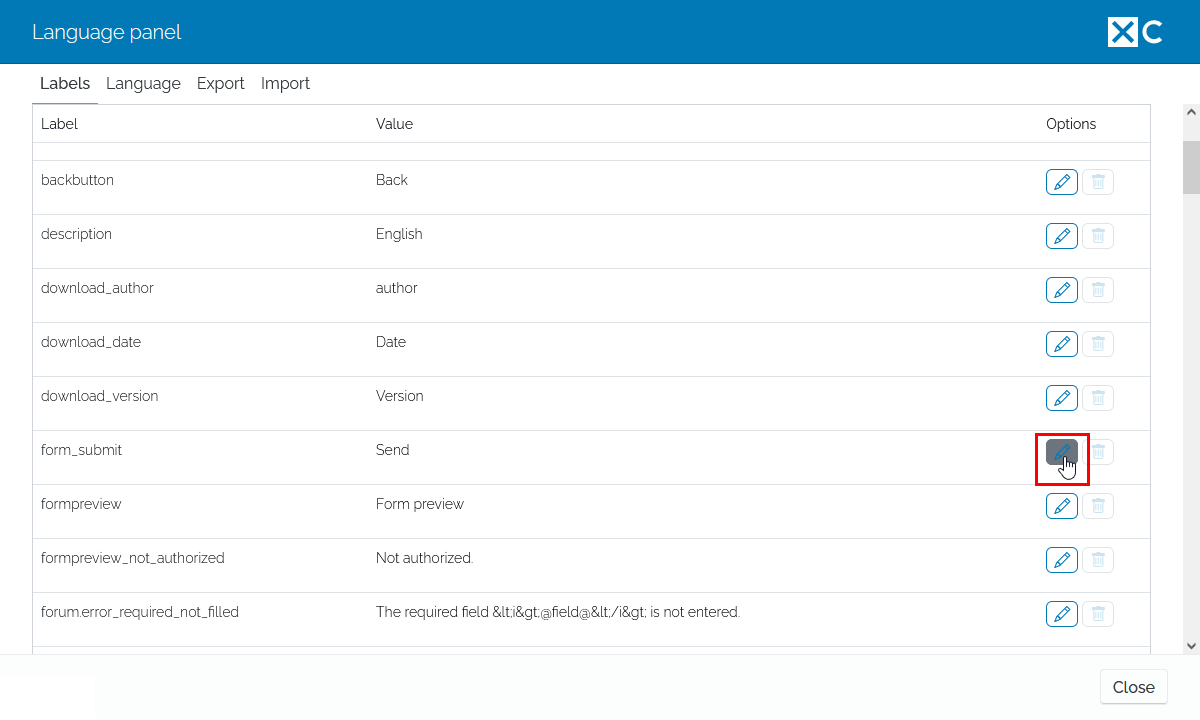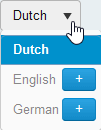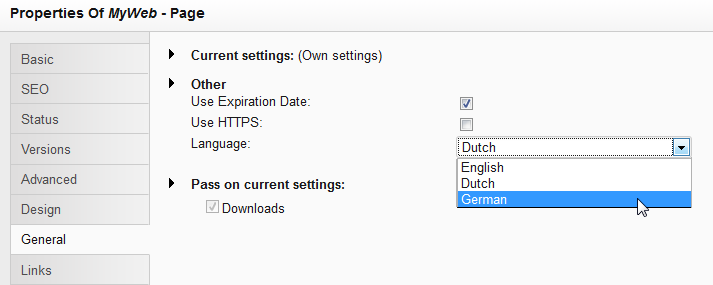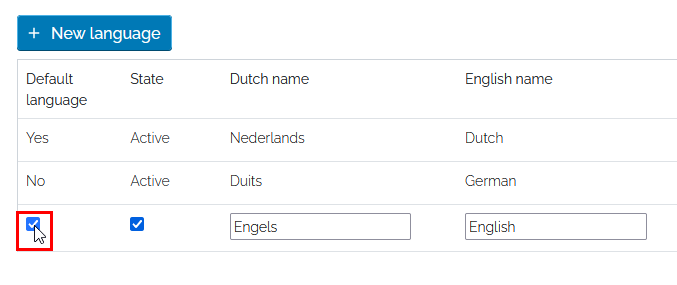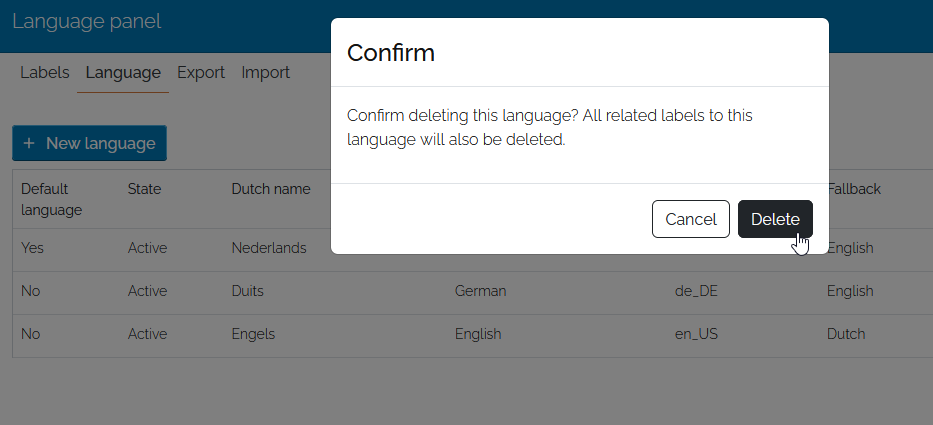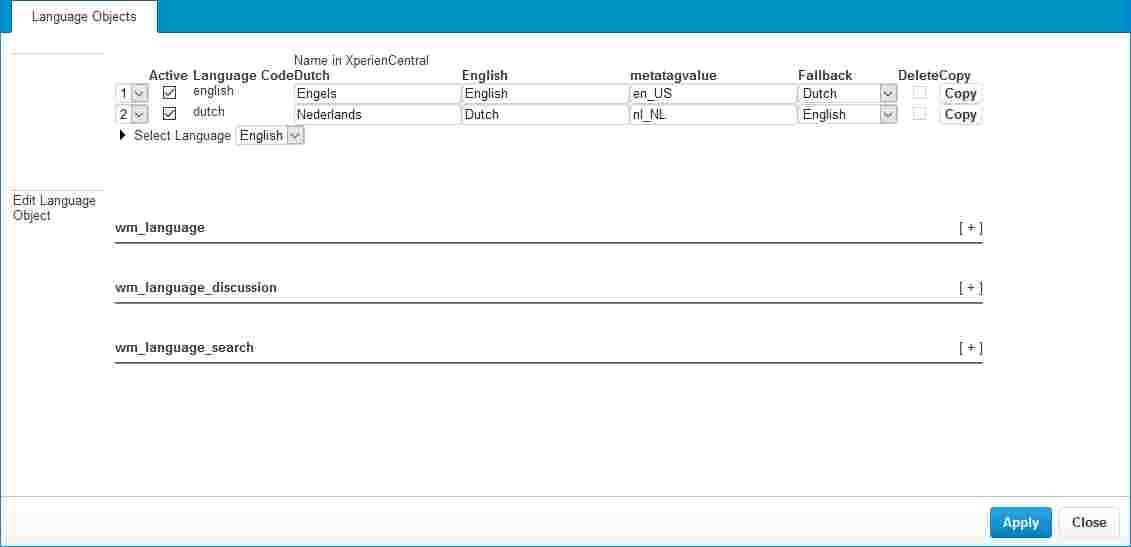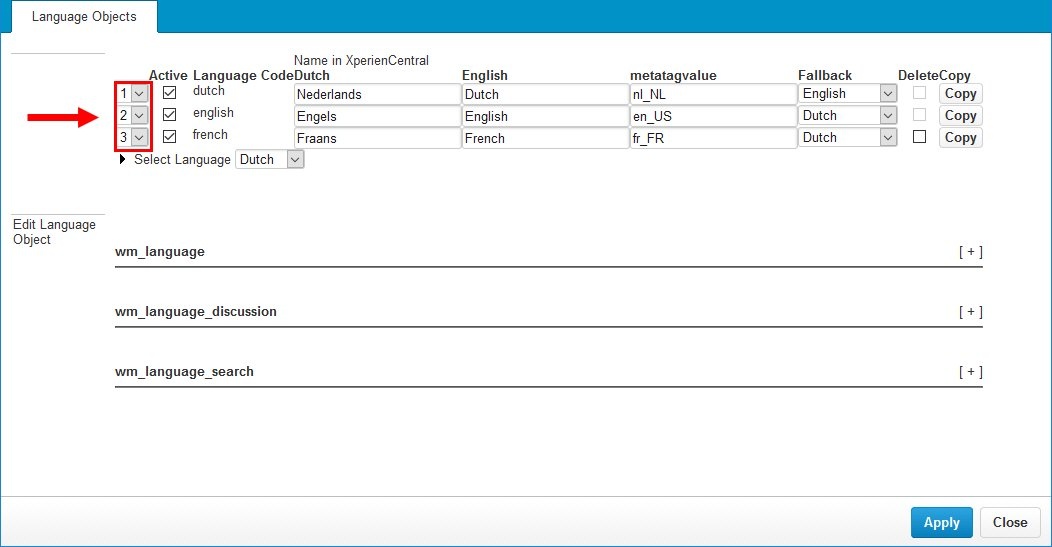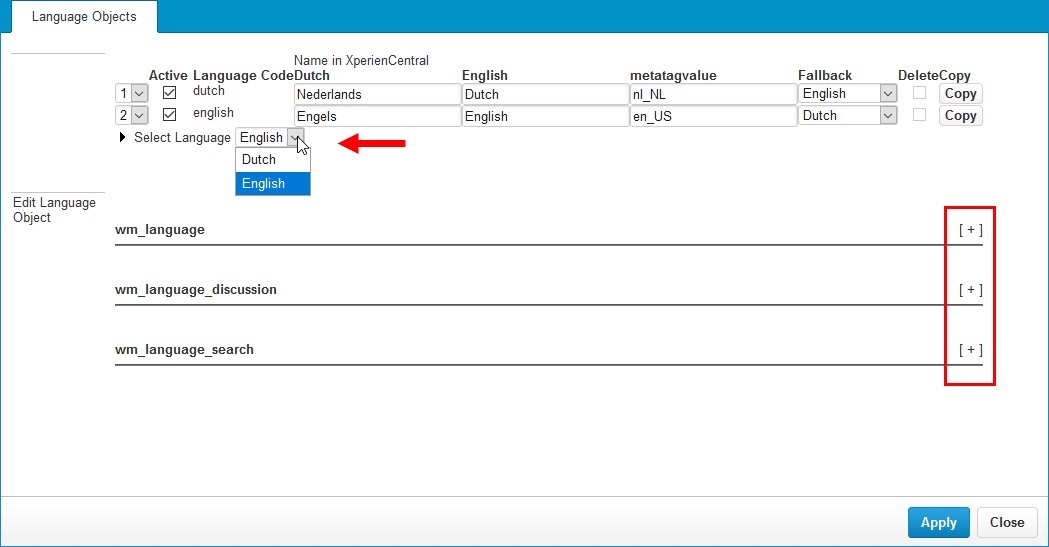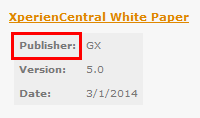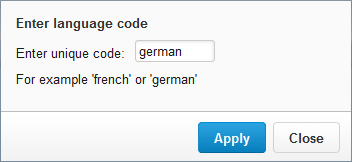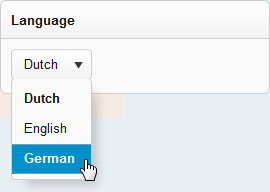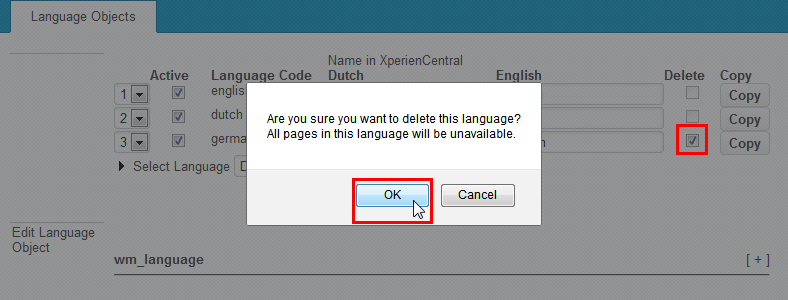...
| Expand | ||||||||||||||||||||||||||||||||||||||||||||
|---|---|---|---|---|---|---|---|---|---|---|---|---|---|---|---|---|---|---|---|---|---|---|---|---|---|---|---|---|---|---|---|---|---|---|---|---|---|---|---|---|---|---|---|---|
| ||||||||||||||||||||||||||||||||||||||||||||
To access the Language Labels panel, navigate to Configuration > Language Labels:
In This Topic
LabelsOn the "Labels" tab you manage the default and custom language labels for XperienCentral. Adding a Custom Language LabelTo add a custom language label, follow these steps:
Modifying a Language LabelYou can modify both the default XperienCentral language labels as well as all custom language labels. To modify a language label, follow these steps:
Deleting a Modified Language LabelEnglish (EN) and Dutch (NL)The default language labels in English and Dutch XperienCentral cannot be deleted. However, if you have modified a language label, you can delete the modification. To do so, click the "trash" icon to the right of a modified language label. The modification will be deleted and the default value of the label will be restored. If a default language label has not been modified, the "trash" icon is grayed out and unavailable. Other LanguagesFor every language that you add to XperienCentral in addition to English (EN) and Dutch (NL), all language labels can be deleted. Be careful when deleting default XperienCentral language labels because it could affect the usability of configuration panels and the Workspace. LanguageThe "Language" tab shows the languages that are available for content in XperienCentral. The default languages are "Dutch" and "English". Here you can also add more languages or delete any language(s) that you have added. Language PropertiesFor each supported language, the following properties are shown:
Adding a LanguageTo add a new language to XperienCentral, follow these steps:
The new language is now available in the language drop-down lists in the left and right Sidebars. For example:
The new language is now also available in the default language drop-down list for a page. For example:
In XperienCentral, you can set any of the available languages as the default content language of the edit environment. The default content language determines the following:
The default content language is the one with "Yes" in the "Default language" column. To change the default language, follow these steps:
Deleting a LanguageTo delete a language, follow the steps below. You can only delete a language that you have added. Because Dutch and English are the default supported languages in XperienCentral, neither of them can be deleted.
To delete a language:
Exporting Custom Language LabelsYou can export custom language labels as well as default language labels that have been modified to a file and then import them in another XperienCentral web initiative. To export custom language labels, follow these steps:
Importing Custom Language LabelsYou can import custom language labels and default languages that have been modified from another XperienCentral web initiative into the current web initiative. To import custom/modified language labels from one or more languages, follow these steps.
InheritanceIf a language label is empty it is possible to have it inherit the value from a related language label. This can be turned on in the General tab of the Setup Tool by enabling the property Providing Default Language Labels in a PluginYou can provide default values for language labels that are contained in a plugin. To do so, follow these steps:
|
| Expand | |||||||||||||||||||||||||||||||||||||||||||||||||||||||||||||||
|---|---|---|---|---|---|---|---|---|---|---|---|---|---|---|---|---|---|---|---|---|---|---|---|---|---|---|---|---|---|---|---|---|---|---|---|---|---|---|---|---|---|---|---|---|---|---|---|---|---|---|---|---|---|---|---|---|---|---|---|---|---|---|---|
| |||||||||||||||||||||||||||||||||||||||||||||||||||||||||||||||
To access the Language Labels panel, navigate to Configuration > Language Labels:
In the top of the panel, expand the "Select website" drop-down list to select the channel for which you want to configure the languages/language labels. Language PropertiesFor each supported language, the following properties are shown:
In This Topic
In XperienCentral, you can set any of the available languages as the default content language of the edit environment for each channel. The default content language determines the following:
The default content language can be seen at the top of the Language Labels panel in the list of available languages. The current default content language is assigned the number "1" ranking. For example: In the example above, Dutch is ranked number "1" in the list which means it's the default content language. The ordering thereafter is the order the available languages appear in the Language Widget.
To change the default content language in XperienCentral, follow these steps:
Modifying a Language LabelTo modify a language label, follow these steps:
Deleting a Language Label
To delete a language label, follow these steps:
The best way to add a new language to XperienCentral is to copy all of the labels for an existing language and then modify the labels in the copied language to the new one you want to support. To copy a language, click [Copy] next to the language. For example:
Modify the labels for the new language. Once copied, the new language is available in the Language Widget. For example:
The new language is now also available in the default language drop-down list for a page. For example: Deleting a LanguageTo delete a language, follow the steps below. You can only delete a language that you have added. Because Dutch and English are the default supported languages in XperienCentral, neither of them can be deleted.
To delete a language:
|
...
